Mattermost Alternatives for 2025
Mattermost has built a strong reputation among tech-savvy teams as one of the first Slack alternatives that comes to mind. Its open-source foundation and self-hosting options make it a favorite for teams that value customization and control over their workflows. But if you’re looking for alternatives that offer similar benefits, what are your options?
In this guide, we’ll explore the top Mattermost alternatives – both open-source and classic SaaS – to understand what features to look for, how they compare, and which ones might be the best fit for your team.
TL;DR: Mattermost Alternatives Shortlist
- Slack for complex project hierarchies and structures
- Orchestra for messaging with built-in calls, tasks & docs
- Zoom Team Chat for Zoom-centered workflows
- Google Chat for Google-centered workflows
- Discord for voice-first and community-style communication
- Chanty for team chat with task tracking
- Microsoft Teams for Microsoft-centered workflows
- Rocket.Chat for customizable communication with federation options
- Ryver for all-in-one team messaging
Why Teams Are Seeking Mattermost Alternatives
While Mattermost is a popular Slack alternative that duplicates its main features and interface, plus offers privacy and customization, it isn’t always the perfect fit for every team.
When users start looking for a Mattermost alternative, it’s usually for one of the following reasons:
If you happen to be facing one of these problems and are considering trying something else, here’s the good news: there are solid Mattermost alternatives, both among open-source and classic SaaS tools.
#1 Open Source Alternatives
If you're on the lookout for open-source apps, you should know that there aren't many of them — but here are two that definitely deserve consideration.
Rocket.Chat vs. Mattermost
An open-source team collaboration platform built for secure messaging.
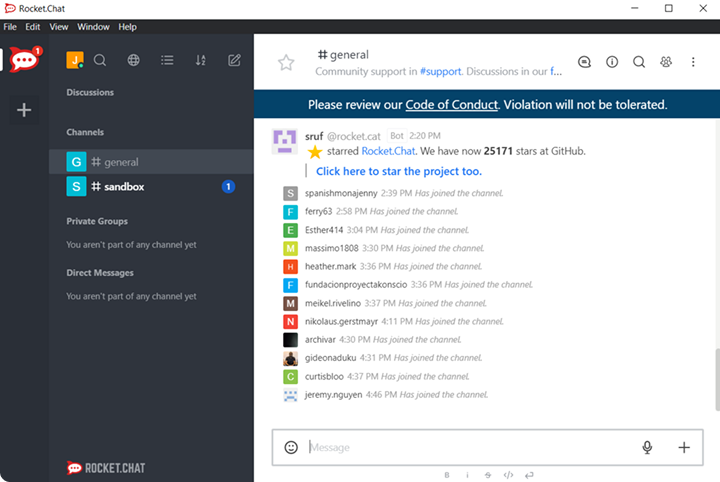
📍Key Features
- Omnichannel Space. Manage customer and team communication across email, live chat, SMS, WhatsApp, and other platforms in one unified interface.
- Self-Hosting & On-Prem Deployment. Complete control over data by hosting on your own infrastructure or choosing a cloud deployment.
- Customization. Access to source code allows deep UI/UX customization, along with a plugin system and REST APIs for custom integrations.
- Federation. Communicate across different Rocket.Chat instances, similar to email or Matrix, with secure federation protocols.
🔎 Compared to Mattermost
- Pros: More flexible integration across external customer channels. Deeper customization due to open-source flexibility.
- Cons: Slightly steeper learning curve for setup and management. Less polished UI. Fewer built-in management tools.
👾 Best for Teams
Rocket.Chat is ideal for highly regulated industries (like healthcare, finance, or government), developer communities, or any organization that prioritizes data privacy and control.
Ryver vs. Mattermost
A collaboration app that combines team communication, task management, and workflow automation into one tool.
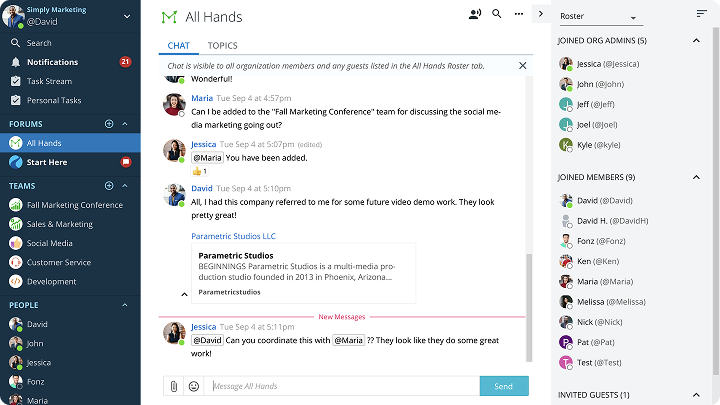
📍Key Features
- Team & Topic Chats. Organized messaging through open forums, private teams, and 1-on-1 direct messages to streamline internal communication.
- Tasks. Built-in task management with Trello-style boards—assign tasks, set deadlines, and track progress directly within the app.
- Voice & Video Calls. Native calling features (powered by integrations like Jitsi) for quick team discussions or meetings.
- Post Streams. Structured, long-form communication threads separate from chats, ideal for announcements, updates, or discussions needing visibility and responses.
- Workflow Automation. Automate repetitive processes using custom rules and integrations with services like Zapier.
🔎 Compared to Mattermost
- Pros: Native management tools. Simpler onboarding for small teams.
- Cons: Less extensible than open-source platforms like Mattermost. Less polished UI. Fewer third-party integrations. Lacks advanced admin controls.
👾 Best for Teams
Ryver works best for small to mid-sized teams looking for a simple Slack + Trello alternative.
#2 SaaS Alternatives
Open-source tools can be an option for a lot of teams. But open source is really just about the code. SaaS, on the other hand, is all about the service. You could take open-source software and run it behind a SaaS product, and most users wouldn’t even notice. What they would notice, though, are the support, the reliability, and how well everything just works.
Here are examples of such top-rated tools:
Slack vs. Mattermost
A pioneer in the world of SaaS communication tools that connects teams and integrates with apps for work collaboration.
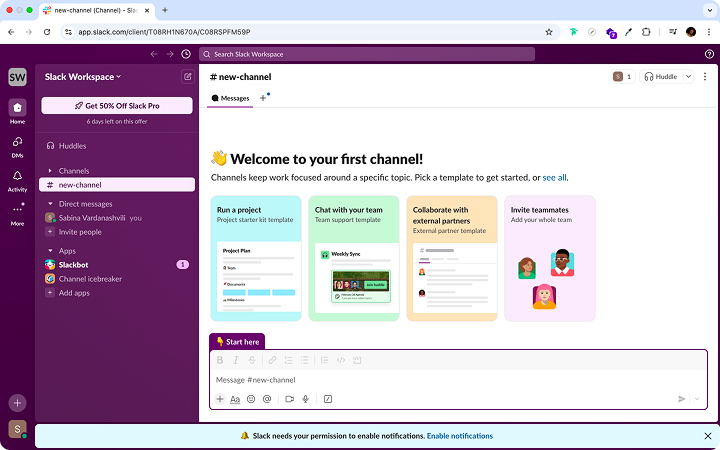
📍Key Features
- Slack Connect. Shared channels to message and stay aligned with people outside your team, like clients, contractors, or partners, directly in Slack without switching apps.
- Threads. The message flows in channels. They’re meant to keep discussions clear and on track.
- Huddles. Audio or video chats you can start in any channel or DM.
- Canvas. A collaborative space for your conversations, meeting notes, or project info that stays connected to your discussions.
- Lists. A task-tracking tool where the team can create to-dos, assign tasks, set priorities, and keep progress visible.
- Workflow Builder. A no-code tool for custom workflows like onboarding, approvals, or reminders.
🔎 Compared to Mattermost
- Pros: Larger app ecosystem. Polished user experience. Faster setup for cloud users.
- Cons: No native self-hosting option. Limited customization compared to Mattermost open-source alternatives. Higher ongoing subscription costs for enterprise-grade features.
👾 Best for Teams
Slack is a go-to for large teams and enterprises, though it might feel messy and hard to navigate for startups, small, and mid-sized teams. Those teams are often settling for alternatives that are more budget-friendly and simple.
Orchestra vs. Mattermost
An all-in-one workspace that brings communication and management as intended – together. Orchestra’s interface is chat-centric, so every project and task has a separate chat to keep your team’s communication on point from the very start.

📍Key Features
- Task-focused Chats. Every task or project starts with a dedicated chat, keeping communication on point. Create private or public chats for personal, team, project, or task communication, plus channels for alerts.
- Chat Folders. A cleaner alternative to threads. With folders like favorites, unread, personal, or task-related, shape chat views however you like.
- Built-in Calls. Voice and video calls are already integrated into task-related chats. Recordings are stored within the same chat.
- Built-in Tasks. Projects and tasks can be created directly from chats. Add assignees, deadlines, and structure with hierarchies, lists, and boards — all in one workspace.
- Tasks from Messages. Turn messages into tasks in one click and link them to relevant projects instantly.
- Media & Files. Easy access to docs, media, and files in every chat.
- Teams & Free Guests. Build your team structure with customizable roles and permissions. No limits on external guests.
🔎 Compared to Mattermost
- Pros: Fine UX/UI. Built-in calls and tasks. Simple onboarding. Agile async updates. Lower technical overhead.
- Cons: Smaller third-party app ecosystem compared to open-source Mattermost alternatives, although custom API options are available.
👾 Best for Teams
Orchestra works best for small and mid-sized modern product, marketing teams, and fast-moving startups. The app is simple yet packed with everything teams need to keep work flowing – easy to use and stylish to work with.
Zoom Team Chat vs. Mattermost
Formerly a video conferencing app, Zoom has expanded its product lineup and become Zoom Workplace, with Zoom Team Chat as one of its main products.
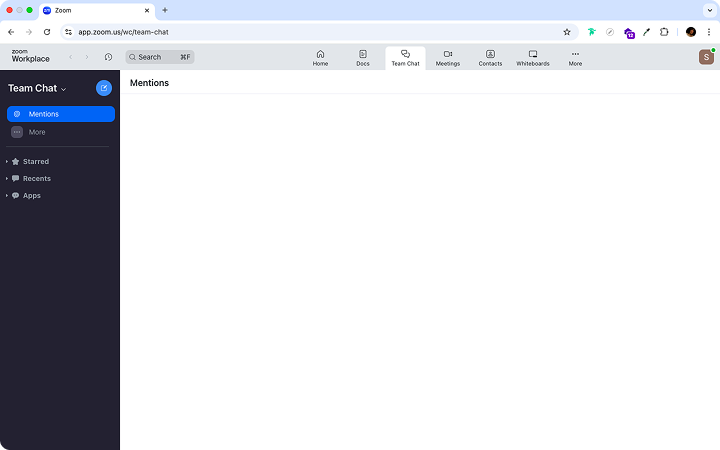
📍Key Features
- Team Chat. A Slack-like interface built inside the Zoom ecosystem. Includes threads, as well as direct and group messaging.
- Meetings. Instant voice and video calls. Create breakout rooms for focused discussions or make async video updates when live meetings aren’t necessary.
- Huddles. Similar to meetings, but more informal and spontaneous.
- Phone. A cloud-based phone service to make and receive calls directly in Zoom, similar to how we used Skype before.
- Calendar. A classic calendar view for scheduling meetings.
- AI Agents. AI-powered chatbots that handle customer inquiries and route issues to the right team.
🔎 Compared to Mattermost
- Pros: Integration with Zoom meetings and video calls. Simple interface.
- Cons: Limited advanced messaging features compared to Mattermost. Fewer customization options. Less suitable for complex workflows or self-hosting.
👾 Best for Teams
Zoom Team Chat is a collaboration hub that integrates seamlessly into the Zoom platform, so it’s ideal for teams that are used to the Zoom platform.
Google Chat vs. Mattermost
Built for teams integrated into the Google Workspace ecosystem, Google Chat allows users to communicate in direct messages or group spaces while collaborating on familiar tools like Docs, Sheets, and Slides.
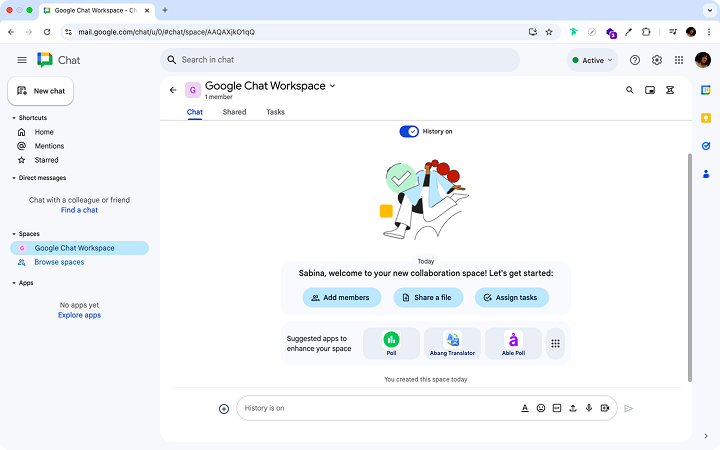
📍Key Features
- Messages & Group Chats. Direct or public chats for discussions.
- Spaces. Threaded conversations, file sharing, and task assignments within each Space.
- Google Workspace Integrations. Additional services like Gmail, Drive, Docs, Sheets, Slides, Meet, and Calendar to collaborate and share work without leaving the chat.
- AI Replies. AI-suggested messages to automate tasks and responses.
🔎 Compared to Mattermost
- Pros: Integration with Google Workspace apps (Gmail, Docs, Drive, Meet). Clean interface.
- Cons: Threaded conversations create chaos as well. Limited customization and control compared to Mattermost. Video calls rely on Google Meet, which has fewer advanced features.
👾 Best for Teams
Google Chat is best for teams already using Google Workspace. Teams that focus on document-based collaboration can also consider this tool.
Discord vs. Mattermost
Originally made for the gamedev community and its streaming, Discord has now become a common voice- and video-based collaboration tool among tech teams.
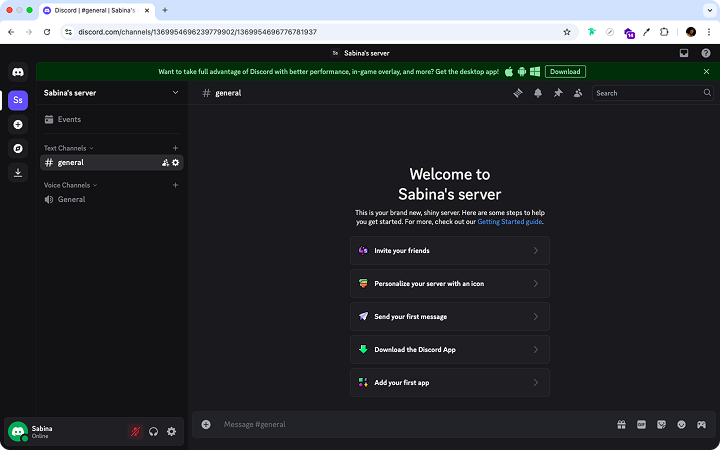
📍Key Features
- Chat Channels. A space for messaging with threaded replies like on Slack.
- Voice Channels. Built-in audio rooms where users can drop in and out freely.
- Video Calls & Streaming. One-on-one or group video calls with built-in screen sharing for live demos, presentations, or collaborative work.
- Custom Roles & Permissions. Fine-tuned control over who can post, moderate, or manage different parts of a server.
- Bots & Integrations. Automation tools, moderation bots, and third-party integrations (like GitHub, Trello, YouTube, and more).
🔎 Compared to Mattermost
- Pros: Fine UX/UI. Always-on voice channels for seamless, casual communication. Free with unlimited messaging and calls. Easy to set up and use.
- Cons: Not designed for business-grade workflows. Limited task management. Fewer integrations with enterprise tools.
👾 Best for Teams
Discord remains a top choice for gamedev communities, as well as creative and remote teams that prefer spontaneous, informal messaging and calls over structured project management.
Chanty vs. Mattermost
A team chat app that combines messaging, task management, and project planning into one tool.
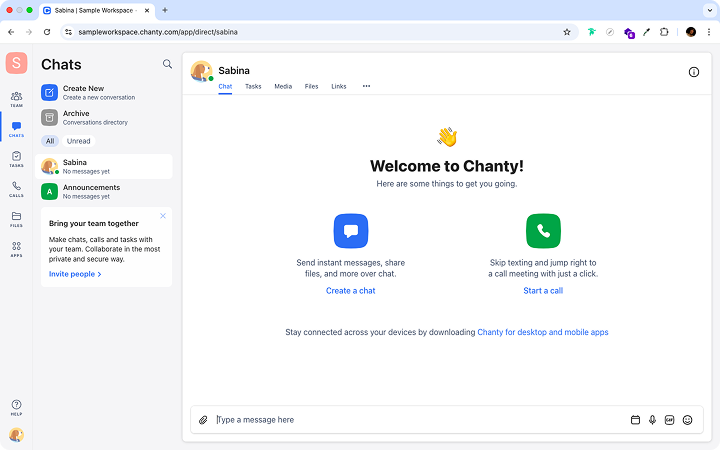
📍Key Features
- Teambook. A central hub where you can find all your messages, tasks, files, and pinned content organized in one place. Threads are also available.
- Chanty Extras. Add-ons like dark mode, a built-in media player, and content previews to improve your work experience.
- Calls. Voice or video calls within the workspace when typing isn’t an option.
- Task Management. A range of tools to work with tasks and manage progress right in the chat.
- Team Space. A shared environment where your whole team can collaborate through chats and tasks.
🔎 Compared to Mattermost
- Pros: Lightweight and great for smaller teams. Built-in task management. Affordable pricing.
- Cons: Basic chat compared to other alternatives. Limited customization and integrations. Fewer features.
👾 Best for Teams
Chanty is a budget-friendly option for small to mid-sized teams seeking a communication tool with built-in basic project and task management.
Microsoft Teams vs. Mattermost
A collaboration platform seamlessly integrated with Microsoft 365, designed for teams working within the Microsoft ecosystem.
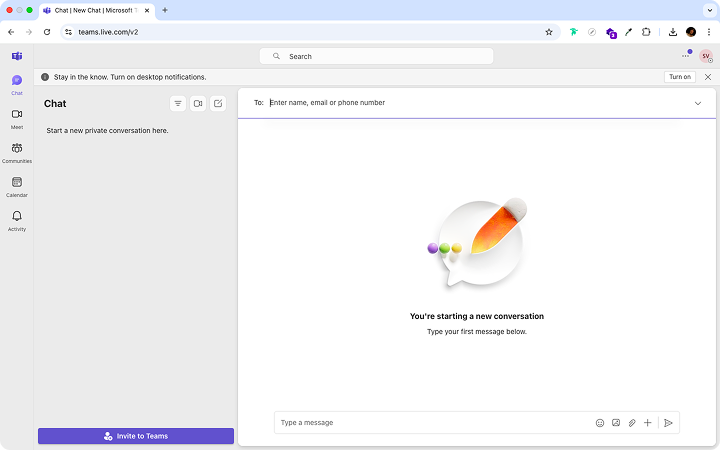
📍Key Features
- Chats. Direct messages with one or more colleagues.
- Channels. You can create them based on any topic. Channels are where all the conversations, files, wikis, and planners are.
- Teams. A space with a list of all the teams you're a part of. They are made up of channels.
- Calls. A cloud-based phone service for calls.
- Meetings. Instant voice and video meetings, just like everywhere else.
- File Collaboration. You can collaborate on Microsoft Docs simultaneously.
🔎 Compared to Mattermost
- Pros: Deep Office 365 integration. Powerful video conferencing. Enterprise-grade security and compliance features.
- Cons: No self-hosted deployment option for most users. Heavier, more complex UX compared to self-hosted Mattermost alternatives.
👾 Best for Teams
Teams that are already using Microsoft 365 and need integration with Office apps will find this option perfect.
Mattermost Alternatives: The Table View
We’ve rounded up some of the top Mattermost alternatives for 2025. To help you decide, here’s a simple table comparing key features and pricing for each platform:
| # | Key Features |
|---|---|
| Slack | Slack Connect, Threads, Huddles, Canvas, Lists, Workflow Builder |
| Orchestra | Built-in Chats, Calls, Tasks, One-Click Task Creation, Media & Files, Free Guests |
| Zoom Team Chat | Phone, Meetings, Team Chat, Huddles, Calendar, AI Agents |
| Google Chat | Messages & Group Chats, Spaces, Google Workspace Ecosystem, AI Replies |
| Discord | Chat Channels, Calls & Streaming, Custom Roles & Permissions |
| Chanty | Teambook, Chanty Extras, Calls, Task Management, Team Space |
| Microsoft Teams | Chats, Channels, Teams, Calls, Meetings, File Collaboration |
| Rocket.Chat | Omnichannel Space, Self-Hosting, Customization, Federation |
| Ryver | Topic Chats, Tasks, Calls, Post Streams, Workflow Automation |
| # | Pricing |
|---|---|
| Slack | Freemium, Pro - $8/user/mo, Business+ - $14/user/mo, Enterprise - Custom |
| Orchestra | Free Trial, Early Bird - $7/user/mo |
| Zoom Team Chat | Freemium, Pro - $15/user/mo, Business - $21/user/mo |
| Google Chat | Free Trial, Starter - $6/user/mo, Standard - $12/user/mo, Plus – $18/user/mo |
| Discord | Freemium, Nitro - $10/user/mo, Nitro Classic - $5/user/mo |
| Chanty | Freemium, Business - $4/user/mo, Enterprise - Custom |
| Microsoft Teams | Freemium, Basic - $5/user/mo, Standard - $13/user/mo, Enterprise - Custom |
| Rocket.Chat | Starter - Free, Pro - $4/user/mo, Enterprise - Custom |
| Ryver | Starter - $35/user/mo, Standard - $65/user/mo, Medium - $2/user/mo, Enterprise - Custom |

